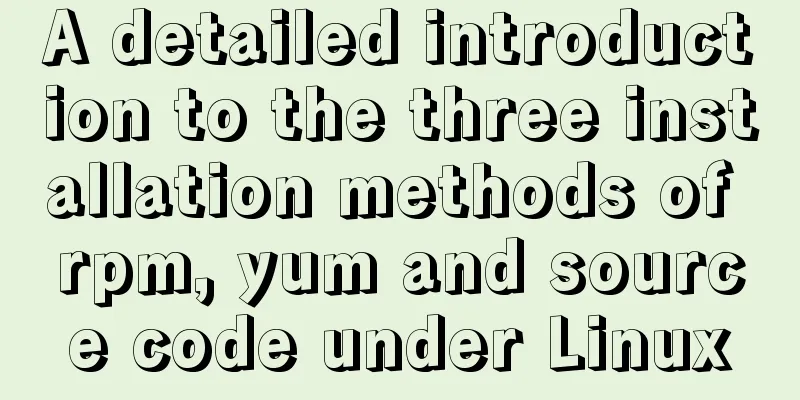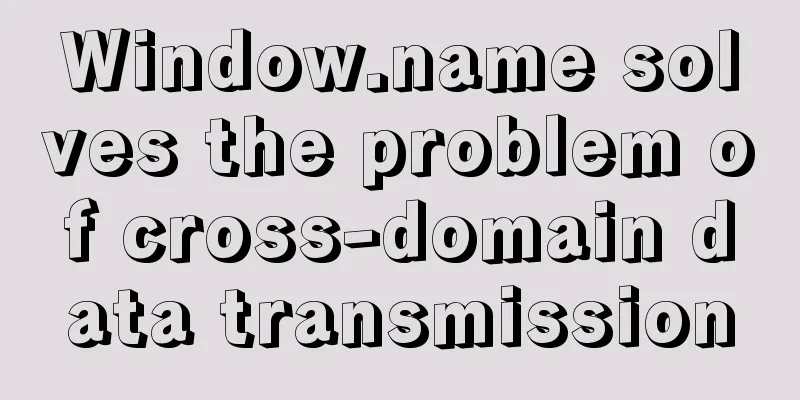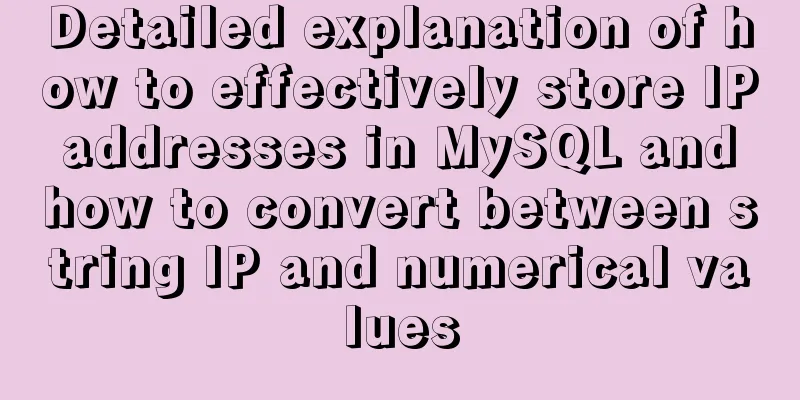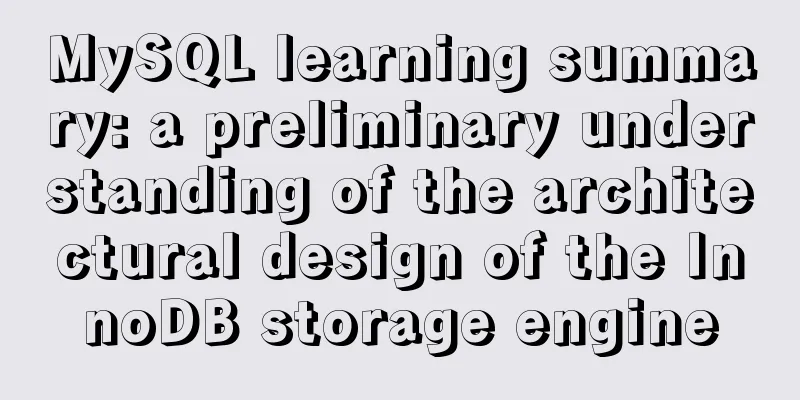A detailed introduction to the three installation methods of rpm, yum and source code under Linux

|
Chapter 1 Source Code Installation The installation of source packages is slower than that of RPM packages because RPM packages are specified according to specific systems and platforms. The program will provide many RPM package formats. Users can choose the appropriate RPM package to install directly according to the system situation, while the source package is equivalent to The general type can be used in multiple systems, so you need to run the configure script to detect the environment and generate the corresponding installation information. 1.1 Advantages of source code installation 1. Complete documentation 2. Because the code can be located, debugging is convenient 3. The native compatibility is the best (because it is compiled locally, as long as the compilation is successful, there will be no dependency issues on various libraries) 1.2 Disadvantages of source code installation 1. Compilation trouble 2. Lack of automatic dependency management, troublesome software upgrades 1.3 Installation Process 1.3.1 Unzip the source package tar file: The source package is usually archived using the tar tool and then compressed using gunzip or bzip2. For .tar.gz and .tar.bz2, the decompression methods are: tar -zxvf FileName.tar.gz tar -jxvf FileName.tar.bz2 1.3.2 Switch to the unzipped directory cd /unzipped directory 1.3.3 Prepare for compilation: Before starting to install the service, you need to execute the configure script, which will automatically compile the current system. A series of assessments, such as source files, software dependency libraries, compilers, assemblers, connectors, etc., and if necessary, You can use the -prefix parameter to specify the installation path of the program. When the script checks that the system environment meets the requirements, it will Generate a Makefile in the previous directory. ./configure -prefix=/usr/local/program 1.3.4 Generate the installation program: The Makefile generated in the previous step will save the installation rules of the system environment dependencies. You need to use the make command to use the appropriate SHELL to compile all dependencies according to the rules provided in the Makefile file. Source code, and then the make command will generate a final executable installation program. make 1.3.5 Installing the service program: If the -prefix parameter is not used in the configure script phase, the program will generally be installed by default. Installed in the /usr/local/bin directory. make install compile and install 1.3.6 Clean up temporary files (optional): make clean 1.3.7 Uninstall service program command (execute only when necessary) make uninstall 1.3.8 View installation information The whereis command locates executable files, source code files, and help files in the file system. These files Attributes should belong to source code, binaries, or help files. For example: where is java whereis [-bmsu] [BMS directory name -f ] file name -b Search the binary portion of the file. -m Search the manual section of files. -s Search the source section of files. -u Undocumented files The -B, -M, and -S flags can be used to change or limit the locations that the whereis command searches. Since the program is required to run is faster and uses the chdir subroutine, so path names given in directory listings with the -M, -S, and -B flags must be complete; For example, they must begin with a / (slash). -B Same as -b, but adds directories to search. Changes or limits the locations where the whereis command searches for binary files. -M Same as -m, but adds directories to search. Changes or limits where the whereis command searches for manual sections. -S Same as -s, but adds directories to search. Changes or limits the locations where the whereis command searches for sources. -f Terminates the last -M, -S, or -B directory listing and signals the start of filenames. (IV) [Parameters] [File] -c compress file -x decompress the file -t Check what files are in the compressed package -z Compress or decompress with Gzip -j compress or decompress with bzip2 -v Display compression or decompression process information -f target file name -P preserve original permissions and attributes -p Use absolute path compression -C specifies the directory to extract to Chapter 2 RPM Package Installation For an rpm package, it is composed of "-" and ".", and basically consists of the following parts: * Package name * Version information * Release version number * Operating platform. When noarch appears, it means that the software is compatible with the platform. 2.1 Common usage 1 2.1.1 Installation
2.1.2 Upgrade
2.1.3 Uninstall
Note: If other programs depend on the package to be uninstalled, the system will prompt that it cannot be deleted. If you need to force deletion, add --nodeps. It will be deleted forcibly, but it may cause the software that depends on it to fail to run. 2.1.4 Check installed rpm -qa 2.1.5 View the specified package
2.2 Common Methods 2 2.2.1 The first type: Query the installed software service information 1. Query the software installed in the system rpm -qa 2. Query which software package an installed file belongs to;
3. Check where the installed software packages are installed; The software name is defined as: the information after removing the platform information and suffix of the rpm package
4. Query information about an installed software package
5. Check the configuration files of the installed software;
6. View the document installation location of an installed software:
7. Check the software packages and files that the installed software depends on;
2.2.2 Second method: Query information about packages that are not installed 1. View the purpose, version and other information of a software package;
2. View the files contained in a software package;
3. Check the location of the software package documentation;
4. View the configuration file of a software package;
5. View the dependencies of a software package
2.2.3 [Options] [Parameters]: -a: query all packages -e: Delete the specified package -f<file>: query the package that has the specified file; -h or --hash: Display progress information -i: Display detailed information of the package -i<package> or --install<package>: Install the specified package -l: Display the file list of the package -p: query the specified RPM package -q: Use query mode -U <package> or --upgrade <package>: Upgrade the specified package -v: Display the command execution process; -vv: Display the instruction execution process in detail to facilitate troubleshooting. Commonly used command combinations: -ivh: installation displays installation progress --install --verbose --hash -Uvh: Upgrade software package --Update; -qpl: List the file information in the RPM package [Query Package list]; -qpi: List the description information of the RPM package [Query Package install package(s)]; -qf: Find which RPM package the specified file belongs to [Query File]; -Va: Check all RPM packages and find missing files [View Lost]; -e: remove package --force Force operations such as forced deletion, etc.; --requires displays the dependencies of the package; --nodeps Ignore dependencies and continue Chapter 3 yum 3.1 Installation Process 1. Installation: yum install software 2. Upgrade: yum update software 3. Delete: yum remove software 4. View: yum info software 5. Search software: yum search software 6. Check dependencies: yum deplist software 7. View installed software: yum list installed 3.2 [Options] [Parameters]: -e silent execution -t Ignore errors -R[minutes] Set the waiting time -y automatically answers yes check-update Check for updatable packages clean all clean packages Clear temporary package files (files under /var/cache/yum) clean headers Clear rpm header files clean oldheaders Clear old rpm header files deplist lists the dependencies of a package list of installable and updatable RPM packages list installed packages list extras Installed packages not in the repository info Installable and updatable RPM package information info installed Information about installed packages (similar to the -qa parameter) install[RPM package] installation package localinstall Install local RPM package update [RPM package] update package upgrade upgrade system search[keyword] search package provides[keyword] Search for a specific package file name reinstall[RPM package] Reinstall the package repolist displays the configuration of the resource library resolvedep specifies dependencies remove[RPM package] uninstall package The above is the full content of this article. I hope it will be helpful for everyone’s study. I also hope that everyone will support 123WORDPRESS.COM. You may also be interested in:
|
<<: How to use axios to filter multiple repeated requests in a project
>>: Tips for Mixing OR and AND in SQL Statements
Recommend
MySQL gets the current date and time function
Get the current date + time (date + time) functio...
In-depth understanding of the life cycle comparison between Vue2 and Vue3
Table of contents Cycle comparison usage Summariz...
Docker's health detection mechanism
For containers, the simplest health check is the ...
Examples of MySQL and Python interaction
Table of contents 1. Prepare data Create a data t...
Docker exec executes multiple commands
The docker exec command can execute commands in a...
js to implement file upload style details
Table of contents 1. Overview 2. Parameters for c...
Vue uses el-tree lazy loading to implement the add, delete, modify and query functions
About the tree display of Vue, the project is use...
Solution to forgetting the root password of self-built MySQL in Alibaba Cloud Linux CentOS 7.2
Verification environment: [root@~~/]# rpm -qa | g...
Detailed explanation of three ways to configure Nginx virtual hosts (based on ports)
Nginx supports three ways to configure virtual ho...
HTML table cross-row and cross-column operations (rowspan, colspan)
Generally, the colspan attribute of the <td>...
Usage of Vue filters and timestamp conversion issues
Table of contents 1. Quickly recognize the concep...
Install MySQL database 5.6 source code under Linux and change the login user password
This article mainly explains how to install the M...
Introduction to the use of MySQL performance stress benchmark tool sysbench
Table of contents 1. Introduction to sysbench #Pr...
Detailed explanation of mysql deadlock checking and deadlock removal examples
1. Query process show processlist 2. Query the co...
Nginx handles http request implementation process analysis
Nginx first decides which server{} block in the c...









